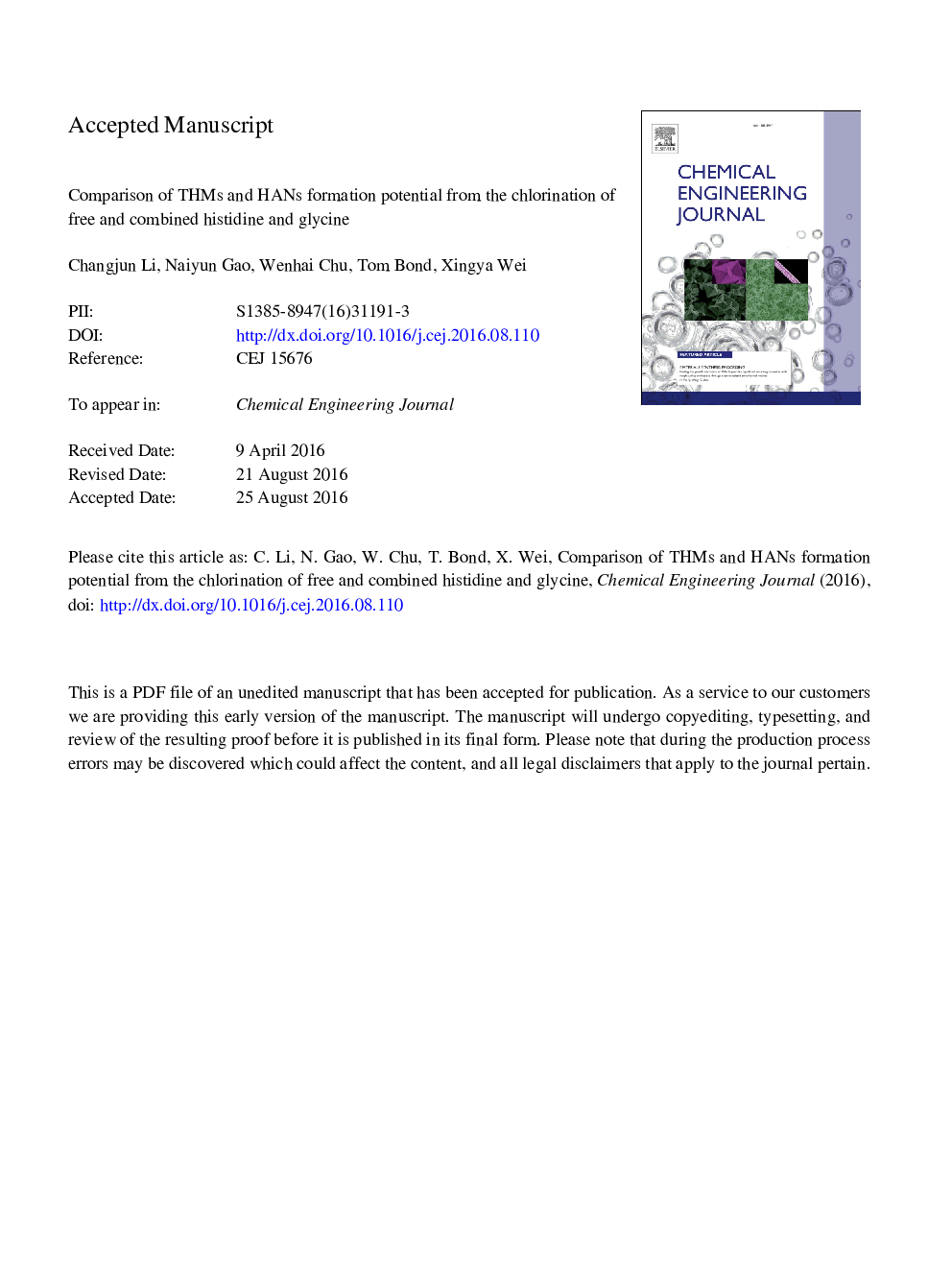| Article ID | Journal | Published Year | Pages | File Type |
|---|---|---|---|---|
| 4763481 | Chemical Engineering Journal | 2017 | 35 Pages |
Abstract
Trihalomethane (THMs) and haloacetonitriles (HANs) are typical and frequently detected carbonaceous (C-) and nitrogenous (N-) disinfection by-products (DBPs) in water treatment, and amine acids (AAs) are important precursors of DBPs. However, previous researches mainly focused on free AAs and few investigations evaluated the DBPs formation potential of combined AAs, especially combined histidine. The formation of THMs and HANs from free and combined histidine and glycine during chlorination was firstly examined and compared in this study with an emphasis on their differences. The impacts of chlorine dose, pH, ammonia nitrogen and bromide were evaluated and mechanistic formation pathways were proposed. In comparison with free AAs, combined AAs generated more chloroform (CF, 125%-671%) but less dichloroacetonitrile (DCAN, 4.66%-87.5%) at all chlorine doses. The effect of solution pH on combined AAs was slighter than that on free AAs. During chloramination, both free AAs and combined AAs generated much smaller amounts of DBPs, especially DCAN (<9.01%), compared with chlorination. At any bromide dose, there was more bromine merging into THMs than DHANs, especially for combined AAs. At the beginning of chlorination, the combined AAs decomposed in three different ways: hydrolysis, decarboxylation and scission, leading to differing amounts of CF and DCAN compared with the free AAs.
Related Topics
Physical Sciences and Engineering
Chemical Engineering
Chemical Engineering (General)
Authors
Changjun Li, Naiyun Gao, Wenhai Chu, Tom Bond, Xingya Wei,
